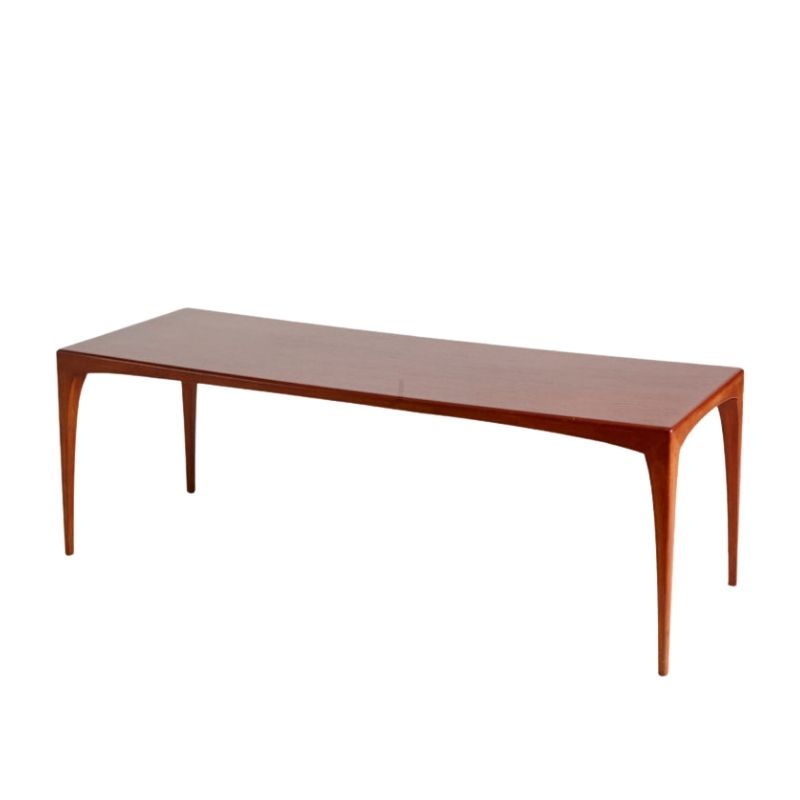How about a steel truss and lexan pyramid building on top of the Great Pyramid?
What about completely enclosing it in a steel truss outer pyramid perhaps 20 feet larger in every dimension? It could be either clear, or a white the color of the original marble, depending on what people would rather see. Perhaps there could even be some high tech way of having it switch between clear and opaque. The outer skin would be a vast protective membrane with an internal atmosphere regulated to protect the actual pyramid from water and wind erosion.
how about
breaking the piramids down...
since it has no religious meaning anymore. Since they stand in the way...maybe the poor egyptians could use the brick... horrible thought? mmm maybe. but it would send out a really strong signal to all those religious fanatics who want (and are busy) tearing down great buildings and statues just because they do not fit into their vision; remember a boeddha statue somewhere in afghanistan... no-one cared about that one. maybe peoples (bush?) eyes would open and they'll see that religion is dangerous for our future for our legacy. But serious now; leave them as they are! it is really wrong to rebuilt something (like ypres and saint-malo and so many other european cities after ww1-2) even stonehenge was rebuild and now they are making assumptions on how the sun passes tru that or that stone at that moment...ridicule no?
Shock!
I guess I was just shocked at the idea of rehabbing an antiquity. Not that refurbishing old stuff is a crime. My Dad actually restores antique clocks thereby increasing their value and functionality incredibly. It's a good thing. But...
I think what hits me wrong about this idea is that the pyramids are antiquities not old things. There is a difference for me. An antiquity is a symbol of man's development, the beginings of civilization. The pyramids are a 3,000 year(and older)visual record of human development. Old things are stuff that was well built and hung around and people used them and fixed them and kept using them. Like cathedrals, roman bridges and shaker furniture.
The pyramids are monuments. I'd rather see them fade monumentally and disappear then become a Las Vegas style recreation of themselves. Although seeing a recreation of what the pyramids and the Sphinx would have looked like would be cool, but I'm happy to see this via a computer simulation.
Not sure if this really elucidates my feelings, but it's the best I can do at the moment...I'm tired and need a martini! G'nite
I guess shock is a fitting word for this discussion...
I am kind of shocked that you and Olive would want to let antiquities erode away. Good lord, should the British Museum just put their antiquities outside on the lawn and let weather and air pollution wear them down too nothingness? How about the Greek and Roman busts in the Uffizi in Florence? Should they be put on pedestals outside along the Arno for the pidgeons to shit on?
What gives here? Statues and paintings should be preserved, but not structures?
I don't follow your reasoning here at all.
And in a more modern example, surely you don't want to just let Venice sink without a fight, do you?
I am shocked too.
Agree with you DCWilson.
Yes, I am a bit offended by what you have said. Olive ! sorry but I do.
Sorry but I don't see any difference between a Gothic cathedral and the great pyramid. I don't see a great diference between 1200 or 3000 years. And it's not just about time.
What I do see closer to Las Vegas is the need to
rehabing Monticello and the White House with almost no-years-history (sorry sorry sorry, just compare with the pyramids).
I thanks to dcwilson to bring to this forum other problems and other things to think of.
About the pyramids:
What about doing some kind of rehab, but no in the great pyramid?. There are other two with the great. So do the rehab for one of the others. And preserve the Great as it is by now. Study what happens with this rehab when is finish and then, MAYBE in 50 or 1000 year do the rehab to the grat with the impovments and corrections needed.
I need a glass of water. G?nite.
Weirdly, I do think I'd rather see Venice dissappear
rather than have it be artificially maintained. I guess I'm a bit odd on my reasoning, but I'd rather see things left alone to be what they are and age as they will. I certainly wouldn't suggest putting paintings out in the rain as they were never intended for such treatment, that's a bit of an absurd thought, DCW. I don't favor intervention really, I am happier to see things left alone.
In the US, in New Hampshire a rock formation known as the Old Man in the Mountain recently fell off. It was a natural formation that formed a rough hewn man's profile. It had been artificially maintained for years but mother nature finally had her way and it fell. There was a furious debate about restoration or an artificial construct for moinths afterwards in the end it was decided to leave things alone. I was glad of that decision, the idea of creating fake nature disgusted me. Creating gardens seems OK but fake wilderness?
it reminds me
seeing all those nice castles (or cathedrals) in the uk, france, belgium, italy... most of them are ruines, faded and so on. In the good old knightmovies (where there was no budget to build one)it seems like the castles were already faded in the middleages. if we would start rebuilding them finally movies can be made that are historically correct...;-)
Olive and the Pyramid Pt.1
So if the art was meant to be inside, then it should be protected, but not if it was meant to be outside?
Well, I'm not sure why indoor antiquities should get preferred treatment over outdoor ones. I thought that what we are trying to do with preservation is preserve the most worthy and informative aspects of the human legacy for our and future generations to experience. I did not realize that indoor/outdoor was a crucial criterion in what was worthy and informative about the human legacy. Is it really?
Regarding your observation that I was being absurd to think of putting paintings outside, well, Olive, me thinks you are excluding datum...to make your case..a good lawyerly technique when not all facts support the reasoning...but hardly crickett in a friendly discussion such as this. I mentioned antiquities like statuary--busts for one example, but statuary in general, not just paintings. Perhaps I did not make myself sufficiently clear. I beg your pardon.
Let me restate it this way: should we move the Greek and Roman statues and busts in the British Museum, the Louvre, the Uffizi, etc. outside and let them waste away in the elements?
Or should we first try to distinguish which ones were intended for outdoors and which intended for indoor display by the Greeks and Romans and then only put the outdoor antiquities out in the yard to waste away?
Do you see my problem with your thinking here?
Perhaps I am misunderstanding you. I apologize if that is the case.
I can appreciate the pleasure you take in looking at weathered, eroded antiquities. Some of them are quite beautiful and haunting in their deteriorated state. But...
Unless we can document that the Greeks and Romans, or the Ankor Wattians, or the Mayans, etc., were striving for the weathered look, it seems we are losing a great deal in exchange for some subjective preference for uninterrrupted decay. We are losing the essense of what humans have been capable of designing and makin in given periods of human existence. And, most importantly, we are losing the ability to experience it first hand.
Olive and the Pyramid Pt.2
Now, though I do not agree with you, I do think you raise one valid (and probably widely held) perspective on preservation--unimpeded ruination has its own historical and aesthetic quality and significance.
But I come down on the other side. I would rather debate about what we ought to preserve of antiquity than argue that we ought to let all of it, or all of the outdoor stuff, anyway, waste away. It just seems so irresponsible to future generations to me. It seems like we're squandering the inheritance of future generations by letting the Great Pyramid and the Sphinx just keep being weathered and ruined.
There are many reasons things should be preserved, but I will give you my major one, fiirst hand experience. Experiencing an artifact first hand, in the way it was intended by its maker, is one of the ways human beings can get outside themselves and begin to understand some of the actual similarities and differences between themselves and their ancestors. I think this experience is vital to retaining our humanity, because our humanity is in part a lineage. Here is an example.
I went to see Pont du Garde aqueduct in France to see something the Roman's built. As I was knowledgeable of real estate development, project planning and engineering and water projects in the American west, I wanted to see this ancient Roman effort at a water project more than, say, the Coliseum. Both offer great chances for humanizing experience, but at that point in my life Pont du Garde called more loudly (and I was in Provence, too). Something remarkable and transforming happened to me there when I walked on it, looked down into the Garde, and laid my hands on the great stones. I realized that my hands were touching the same, or nearly the same, surface that the hands of a human slave had touched a thousand or more years ago. I was chilled and I was humanized by it. My favorite quote by Martin Luther King--the arc of the moral universe is long, but no lie can live forever--was deepened in meaning. The slave who touched where I touched would have had to wait perhaps two thousand years to be freed. It made me realize that no matter how useful or beautiful or empowering a human endeavor may be, NOTHING is worth the enslavement of another human being. Did I know this already? Of course, on an intellectual level, but not on an experiential level. And experience can make all the difference in the way persons live their lives. And the way persons live their lives can make all the difference, because things ARE sensitively dependent on initial conditions. There ARE nonlinear changes that occur, because of small acts of human individuals.
Olive and the Pyramid Pt.3
Pont du Garde broke me out of my own society's conditioning to view slavery as something intellectually degenerate from a history book and made it real. Pont du Garde made the horror and inhumanity of slavery real to me in a way that seeing a slave's quarters in Alabama had not done for some reason (something I will always be ashamed of). I can only suppose there just are some insights that one must step outside of one's own culture and time to grasp. And there are somethings, which if not grasped, leave one hopelessly lacking in humanity and insight. And what I experienced at Pont du Garde would have been even more intense and humanizing had the acqueduct been intact and had water been running through it still. But it was at least essential that most of it remain for me to get the message, I believe. Human slavery consecrated that place, not Roman engineers and their vision of an empire, but they consecrated it in the building of an artifact. Perhaps someone else would experience something entirely different at Pont du Garde. But the point is that people often are humanized by experiencing these antiquities. To let Pont du Garde dissolve eventually into an indistinguishable pile of rubble will rob it of much of its ability to humanize us. Why? Because it was not just the laying on of hands on stones that changed me. It was the laying on of hands on a recognizable artifact of a size and scale and understandable purpose that left me with the similar visual perspective, sense of awe, dashed hope and sense of being dwarfed by the aqueduct that a slave must have felt at the time.
I will go to my death grateful that the French decided not to wreck it to punch a railroad trellis across there.
I will got to my death hoping the French preserve it, rebuild it even. I suspect there are many others like me that could benefit from touching those stones.
I have not laid hands on the Great Pyramid. I have not climbed it yet. But I will and when I do, I expect that I will once again make a nonlinear leap in my own humanity. And the leap I take would be still more profound were it skinned to illuminate at night so that I could see what those who built it saw. Can two know the same in their knowing? No. Can two be humanized by the same artifact? Yes. And I expect a thousand years from now, if it is preserved, others will, too.
FWIW, I feel the same about certain natural places. Yosemite must be preserved to experience, not preserved from experience. The ecosystem does not need Yosemite. Human beings need Yosemite--to help save them from themselves.
Human beings need the Great Pyramid, the Sphinx, the Colisseum, Pont du Garde, etc., for the same reasons.
Many of us ARE redeemable, if we have the means of redemption at hand.
Preservation of certain artifacts is one way of ensuring we do.
On not being cricket
Sorry DCW, any and all oversights and deletions of data are owed to my not remembering exactly what you wrote and not being able to go back and reread whilst posting. But, I don't think that anywhere have I stated that I would like to see anything restored or preserved, indoors or out. I just like leaving things alone to age in peace. 'Unimpeded ruination' is, I think your term, I like that. But it has nothing to do with an aesthetic, just a conviction that humans are making a mess out of the earth and we should just stop. The destruction cause by our species to the planet we live on scares me. I think we need to get off our butts and learn how to be stewards rather than destroyers. And at the end of the day a pyramid, an aqueduct or a sculpture means very little when we are looking at sterile oceans and denuded rain forests.
Maybe my viewpoint mystifies you, OK, I can live with that. I do understand how humbling contact with history can be. It's just for me the reaction is more powerful when seeing an ancient tree versus a man-built object.
http://www.woodland-trust.org.uk/ancient-tree-forum/atfaboutus/aboutus.htm
If you fancy old trees,
come skiing at Mammoth here in California this winter, and on the drive up from LA take a peek at the Bristle Cone Pine forest. Waaaay old. At one time they were said to be the oldest living things on the planet. Can't say if that still holds true or not. Regardless, some of the scraggly thinks are over three thousand years old.
I always like to search for common ground in such disagreements. Here's what I can find. We are both very pessimistic about what man has done to the world and his fellow man during humanity's time in the evolutionary spotlight.
We differ on how to redeem humanity and on whether humanity is redeemable. You seem quite a bit more pessimistic in this regard than me.
Old trees
Yeah old trees do seem to profoundly affect me. I saw a couple in the UK and I was awestruck. I've got a book about them, link below. As for pessimism on humanity, I am a bit disgusted with our species at the moment. I went to a conference in October on sustainable architecture, energy use, product usage/recycling, etc. and it was not an uplifting experience. I so was to go 'off the grid' right now and raise my own vegetables and wait until all the Republicans are out of office.
If you need any help, please contact us at – info@designaddict.com









